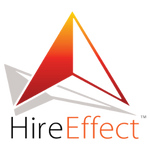Bookkeeping FAQs
- What are the differences between a P&L and a Balance Sheet?
- Why do I need a Chart of Accounts?
- Do I have to keep receipts for everything?
- What is Dext, and why do you require that your clients use it?
- Can I write on the receipts?
- Why do I need to get W-9s from my vendors?
- Why can’t I use my company funds for personal use and let the company claim the expense?
- What’s the difference between cash and accrual accounting?
- Why does my asset/liability transaction not appear on my P&L?
What are the differences between a P&L and a Balance Sheet?
A balance sheet is a snapshot of your business at a specific moment in time. It tells you the value of your assets and liabilities so you can tell your financial position. A profit and loss report shows the performance of the business over a period of time. How much money per month came in, and how much went out. The balance sheet tells you where you are. The P&L tells the story of how you got there.
Back to Top
Why do I need a Chart of Accounts?
A Chart of Accounts allows you to organize all of the financial transactions that take place during the course of business. By breaking down all your transactions into categories and then subcategories, you can more clearly see the financial health of your business at any given time. By separating your revenue, expenses, assets, and liabilities, you gain insight into the effectiveness of different areas of your business.
Back to Top
Do I have to keep receipts for everything?
Every transaction may be important in hindsight. It is essential to keep the documents that back up those transactions because they support the entries in your books and on your tax return. Receipts for purchases, invoices, paid bills, account statements, deposit slips, and canceled checks all have some information you need to record in your books. The IRS even says that you should keep them “in an orderly fashion and in a safe place.” If it involves your business, you should save the backup. The worst that can happen is you don’t need them in the future.
Back to Top
What is Dext, and why do you require that your clients use it?
Dext is the paperless, nearly effortless solution we use that allows for digital document storage. Instead of keeping piles, bags, or boxes of paper documentation, Dext keeps these documents secure and in the cloud. It’s how we can help you disaster-proof your backup. It is also the first step for many of the automation routines that help us save you time and effort in processing those receipts.
Back to Top
Can I write on the receipts?
Writing on receipts is an excellent way to provide context and detail directly on the document image. It is also very convenient since you usually just signed a copy.
Back to Top
Why do I need to get W-9s from my vendors?
A business is required to obtain a taxpayer identification number (TIN) from any vendor to whom it makes payments that require the issuance of a Form 1099-MISC. A Form W-9 facilitates obtaining this information. When you pay $600 or more to a vendor for services, and that vendor is not a corporation, you must issue Form 1099. You can be subject to severe penalties for filing Form 1099 with missing or incorrect information.
Back to Top
Why can’t I use my company funds for personal use and let the company claim the expense?
For an expense to qualify as deductible to a business, it must be both ordinary and necessary. An ordinary expense is one that is common and accepted in your trade or business. A necessary expense is one that is helpful and appropriate for your trade or business. Maintaining separate accounts will allow for more straightforward accounting of what may be a deductible business expense or preparing a Schedule C. More importantly, you may be crossing ethical and legal lines.
Back to Top
What’s the difference between cash and accrual accounting?
The fundamental difference between cash basis and accrual accounting lies in the timing of recording income or expenses in your books. In accrual accounting, you record income and expenses immediately when they arise, even if you have not yet paid or received any money. Bookkeeping on a cash basis means recording your income or expense at the exact time of an inflow or outflow of cash.
Back to Top
Why does my asset/liability transaction not appear on my P&L?
An asset or liability is something with a positive or negative value. It is part of the current snapshot of your business, and you’ll see it on the balance sheet. The transactions that adjust the value of the asset or liability are visible on the P&L report that describes the business operating results over a period of time.
Back to Top

